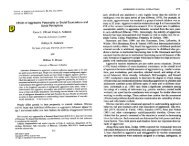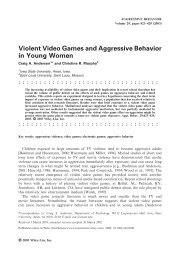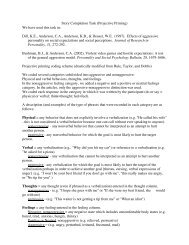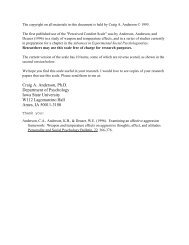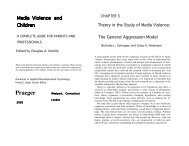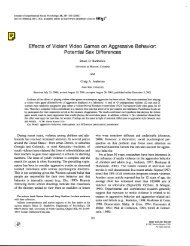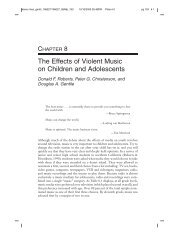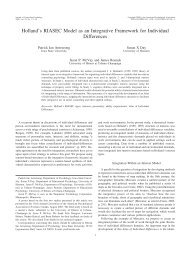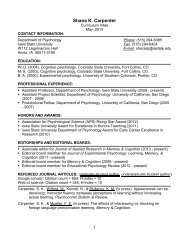Attributional Models of Depression, Loneliness, and Shyness
Attributional Models of Depression, Loneliness, and Shyness
Attributional Models of Depression, Loneliness, and Shyness
Create successful ePaper yourself
Turn your PDF publications into a flip-book with our unique Google optimized e-Paper software.
260 CRAIG A. ANDERSON AND LYNN H. ARNOULT<br />
seen in Table 9.4, the pattern was very similar to that found in Anderson<br />
(1983c).<br />
In the final study, Anderson & Arnoult (in press) had subjects generate<br />
open-ended self attributions for each <strong>of</strong> the 20 ASAT-I situations.<br />
Subjects then rated their own causes on five dimensions-locus, stability,<br />
globality, controllability, <strong>and</strong> intent. In this study, then, the dimensional<br />
locations <strong>of</strong> subject-generated attributions were determined entirely by<br />
the subjects who generated the causes. Again, for each situation, the<br />
interdimensional correlations were calculated across subjects <strong>and</strong> averaged<br />
across situations. The correlations were all significant <strong>and</strong> as shown<br />
in Table 9.4, were similar to results <strong>of</strong> the previous studies. Overall,<br />
then, the results conclusively demonstrated that the four dimensions <strong>of</strong><br />
primary interest are not empirically orthogonal. Internal causes are also<br />
relatively more stable, controllable, <strong>and</strong> global than are external causes,<br />
for example.<br />
What does this tell us about attributional models <strong>of</strong> problems in living?<br />
The main point is that any simple zero-order correlation between<br />
a dimension <strong>of</strong> attributional style <strong>and</strong> some problem in living is subject<br />
to serious confounding. Is a correlation between globality <strong>and</strong> depression,<br />
for instance, due to globality <strong>of</strong> attributional style or to the controllability<br />
component <strong>of</strong> the globality measure? Two implications follow<br />
from this confounding. First, the presence <strong>of</strong> a significant zero-order<br />
correlation between a problem in living <strong>and</strong> a dimensional measure <strong>of</strong><br />
attributional style does not unequivocally support that causal dimension<br />
as a factor in the problem. Any such zero-order correlation may be entirely<br />
spurious. Second, the models proposed by Weiner <strong>and</strong> the learned<br />
helplessness theorists may be too complex. There may be a single underlying<br />
causal dimension that relates to the motivational, cognitive, <strong>and</strong><br />
affective features <strong>of</strong> various problems in living. Of course, two or more<br />
dimensions may be needed. We propose that controllability is the primary<br />
dimension affecting success expectancies, motivation, <strong>and</strong> performance<br />
(hence, outcomes <strong>and</strong> affect). It also seems reasonable to<br />
postulate an additional need for the locus dimension, related primarily<br />
to affect. In the next section we present an empirical test <strong>of</strong> these predictions.<br />
AN EMPIRICALTEST OF UNCONFOUNDED<br />
A TTRIBUTIONALSTYLEDIMENSIONS<br />
To address the dimensionality question we recently conducted a large<br />
scale questionnaire study (Anderson & Arnoult, in press). College students<br />
completed the modified depression scale (MDS), the modified<br />
loneliness scale (MLS), <strong>and</strong> the modified shyness scale (MSS) proposed



